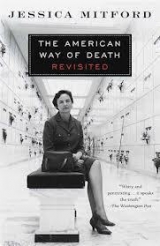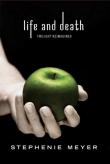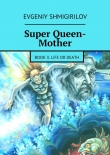
Текст книги "The American Way of Death Revisited"
Автор книги: Jessica Mitford
сообщить о нарушении
Текущая страница: 1 (всего у книги 23 страниц)
Jessica Mitford
THE AMERICAN WAY OF DEATH REVISITED
Dedicated to Karen Leonard, Lisa Carlson,
and Father Henry Wasielewski,
who, each and all, have inherited the mantle of
Scourge of the Undertaking Industry
EDITOR’S NOTE
At a happy lunch with me early in 1995, Jessica Mitford—“Decca” to everyone who knew her—agreed to prepare an updated version of her classic work The American Way of Death. (As she reports in her introduction to this volume, we had worked on that book together in the early sixties, and had remained close friends both through a number of other publishing ventures and after our professional relationship came to an end.) A lot had changed in the funeral trade since the first edition was published, in 1963, and not many of the changes were for the better. The plan was to retain from the original everything that still applied and to add new chapters as needed, such as the report on the Tiburon conference (“Not Selling”), an investigation of the new international funeral giants (“A Global Village of the Dead”), and an account of the failures of the Federal Trade Commission in the wake of new legislation that was written largely in reaction to the first edition of the book. Certain material—for instance, most of the chapter on floral tributes (“The Menace of P.O.”)—was excised as no longer relevant, although I suspect that the floral deluge that followed Princess Diana’s death would have evoked some new commentary on this subject. And, of course, a great deal of updating—particularly of prices—was needed.
Most of this work—including the new chapters mentioned above, as well as the introduction and the final chapter, “New Hope for the Dead”—Decca finished before her unexpected (and mercifully swift) death from cancer, in 1996. What remained to be done was accomplished by three people. First, there was her brilliant research and investigative assistant, Karen Leonard, who took on increasing responsibilities and, indeed, soon found herself drawn into the funeral reform movement. The second crucial person was Lisa Carlson, probably the most influential figure in that movement, who made many generous contributions to the book, not the least of which was her extensive help with the penultimate chapter, “Pay Now—Die Poorer,” which sets out the complex realities—and booby traps—inherent in pay-in-advance funerals. Finally, Decca’s husband, Robert Treuhaft, had made a promise to her just before she died: the distinguished labor– and civil-rights lawyer, who had worked with her on many of her books, would retire from his practice and see this book through to completion. This he heroically did.
Almost until her final week, Decca was reveling in the job, bombarding me and other pals with faxes that gleefully skewered the more fatuous and/or hypocritical high jinks of the industry. She could be ruthless—savage, even—when she was on the warpath, but she never stopped laughing, which is probably why The American Way of Deathwas not only welcomed as a necessary corrective in 1963 but was so enjoyed as a piece of writing. And why it still reads so well today.
The American Way of Death Revisitedis being published exactly thirty-five years after the original edition. Unfortunately, the corrective is as necessary today as it was then. Fortunately, it is being applied.
ROBERT GOTTLIEB
FOREWORD
This would normally be the place to say (as critics of the American funeral trade invariably do), “I am not, of course, speaking of the vast majority of ethical undertakers.” But the vast majority of ethical undertakers is precisely the subject of this book. To be “ethical” merely means to adhere to a prevailing code of morality, in this case one devised over the years by the undertakers themselves for their own purposes. The outlook of the average undertaker, who does adhere to the code of his calling, is to me more significant than that of his shadier colleagues, who are merely smalltime crooks such as may be found in any sphere of business. Scandals, although they frequently erupt (misuse by undertakers of the coroner’s office to secure business, bribery of hospital personnel to “steer” cases, the illegal reuse of coffins, fraudulent double charges in welfare cases), are not typical of the trade as a whole, and therefore are not part of the subject matter of this book.
Another point often made by critics of the modern American funeral is that if there are excesses in funerary matters, the public is to blame. I am unwilling on the basis of present evidence to find the public guilty; this defendant has only recently begun to present his case.
I have not included the atypical funerals: quaint death customs still practiced by certain Indian tribes, the rites accorded Gypsy kings and queens, the New Orleans jazz funerals, the great movie and gangland funerals which had their heyday in the thirties and still occur from time to time. I have regretfully avoided these byways, intriguing though they are, for the main highway—the “average,” “typical” American funerary practices, surely fully as curious as any of the customs derived from ancient folklore or modern variants.
INTRODUCTION
To trace the origins of this book: my husband, Bob Treuhaft, got fired up on the subject of the funeral industry in the mid-to-late 1950s. A labor lawyer, he represented a number of trade unions. To his annoyance, he began to notice that when the breadwinner of a union family died, the hard-fought-for death benefit, achieved often through bitter struggle and intended for the benefit of the surviving spouse and children, would end up in the pockets of an undertaker. “These people seem to know exactly how much a warehouse worker gets, and how much an office secretary,” he would complain, “and they set the price of the funeral accordingly.”
Bob’s idea of a solution was to organize a nonprofit group which through contract with a local undertaker would obtain simple, cheap funerals for its members at a fraction of the going rate. Thus was born the Bay Area Funeral Society (BAFS), its membership running heavily to Unitarians, co-op members, university professors and other eggheads. I am sorry to say I rather mocked these good folks, calling them the Necrophilists and teasing them about their Layaway Plan. Why pick on the wretched undertakers? I asked Bob. Are we not robbed ten times more by the pharmaceutical industry, the car manufacturers, the landlord?
After reading some of the trade magazines he brought home, I saw the point. Their very names were captivating: Casket & Sunnyside, Mortuary Management, and my favorite, Concept: The Journal of Creative Ideas for Cemeteries. Once hooked, I found them to be compulsive reading, revealing a fantasy world I never knew existed: “Futurama, the casket styled for the future …” “The True Companion Crypt, where husband and wife may be truly together forever….” Spotting an ad for “The Practical Burial Footwear Company of Columbus, Ohio,” I sent for samples and was rewarded with a package containing the “Fit-a-Fut Oxford.” As a leaflet explains, these oxfords were specially designed, after two years of research, to fit the deceased foot after rigor mortis sets in. They are “fit-a-fut” because they lace up at the back as well as in the front, and the soles slope downwards. (Unfortunately, our son Benji, then in high school, wore them around the house, and they soon fell apart.)
Bob suggested that I write an article about the Bay Area Funeral Society, drawing on the trade magazines and their flights of rhetoric against the BAFS, the clergy, and anybody else who favored a return to simpler funerals. I did so, in a piece entitled “St. Peter, Don’t You Call Me,” which was rejected by every major magazine on the ground that it was too distasteful a subject.
It eventually found a home in Frontier, an obscure liberal monthly published in Los Angeles, circulation 2,000, in its issue of November 1958.
Prodded by Bob, the funeral society ordered 10,000 reprints and distributed these far and wide. An immediate consequence was an invitation for me to appear on Caspar Weinberger’s weekly television program, “Profile, Bay Area,” in a debate on the Bay Area Funeral Society featuring a Unitarian minister and myself versus two undertakers, who proved to be wildly comic adversaries.
Developments now came thick and fast. Terrence O’Flaherty, television columnist for the San Francisco Chronicle, reported that the program had generated more mail to his column than any public event since The Bad Seedwas performed at a local junior high school. Roul Tunley, a staff writer on the Saturday Evening Post, read O’Flaherty’s column and decided that the funeral society would be a good subject for the Post. His article, entitled “Can You Afford to Die?,” came out in June 1961. Although I was actually sadly inactive in the funeral society, Tunley depicted me as “an Oakland housewife leading the shock troops of the rebellion to undermine the funeral directors, or ‘bier barons,’ and topple the high cost of dying.”
The public reaction was absolutely astonishing. The Posteditor reported that more mail had come in about Tunley’s piece than about any other in the magazine’s history, and observed that it “seemed to have touched a sensitive nerve.” Bob got a call from the Oakland postmaster: “We have hundreds of letters here addressed simply ‘Jessica Treuhaft, Oakland,’ giving no street or number.” (They were eventually delivered. One envelope bore the stark direction “Jessica Treuhaft, Cheap Funerals, Oakland.”)
Surely this spate of letters showed enough public interest in the subject to warrant consideration of a book? I wrote to Roul Tunley, urging him to expand his piece into a book. He replied that he was too busy with other assignments. “Why don’t you write it?” he suggested.
Bob and I discussed this possibility. I said I would consider it only if he would help and work with me on it full time. And so it was settled.
Aside from the usual difficulties that inevitably occur (at least in my experience) in the course of writing, a crisis of huge proportions threatened to sink the whole endeavor when the book was about half finished. At the outset, I had obtained contracts from the two publishers who had taken my first book, Hons and Rebels(in America, Daughters and Rebels), published in 1960: Victor Gollancz in England, and Houghton Mifflin in the U.S., with whom I was on the friendliest terms. They had both been pleased with the outline and first chapter of the funeral book. At some point I sent them more chapters, including a detailed account of exactly what happens in the funeral director’s inner sanctum, the embalming room, which is strictly off-limits to the public, and especially to the family of the deceased. Hoping to infuse this admittedly revolting subject with a touch of macabre humor, I cast the whole description in mortuary jargon (see chapter 5, “The Story of Service”).
To my extreme dismay, Victor Gollancz and the editor at Houghton Mifflin with one accord demanded the excision of this passage.
From Houghton Mifflin: “We think that you make your book harder to sell by going at too much length and in too gooey detail into the process of embalming.” From Gollancz: “The joke, such as it is, surely is going on far too long. I cannot imagine any publisher here wanting it.”
This was devastating news. As embalming is the ultimate fate of almost all Americans, the economic base of the funeral industry, and as practiced on a mass scale a uniquely American practice, to omit a description of it was unthinkable. We considered finishing the book and reproducing it for self-publication. At this point, my brilliant agent, Candida Donadio, stepped in. She found a publisher, Robert Gottlieb of Simon & Schuster.
Thenceforward, all was plain sailing. Gottlieb, at the age of thirty something of a prodigy in the publishing world, loved the embalming chapter and made an inestimable contribution to the book as a whole.
Months before The American Way of Deathwas published, the funeral industry became aware of the work in progress, and it was not long before the trade press rounded upon me in full force. A new menace had loomed on their horizon: the Menace of Jessica Mitford. Headlines began to appear in the undertakers’ journals: JESSICA MITFORD PLANS ANTI-FUNERAL BOOK, AND MITFORD DAY DRAWS CLOSER!
When Mortuary Managementbegan referring to me as Jessica tout court, I felt I had arrived at that special pinnacle of fame where the first name only is sufficient identification, as with Zsa Zsa, Jackie, or Adlai. Greedily I gobbled up the denunciations: “the notorious Jessica Mitford”; “shocker”; “stormy petrel.”
In an article headlined WHO’S AFRAID OF THE BIG, BAD BOOK? the editor of Mortuary Managementsaid there was little to fear because books about “the Profession” never enjoy large sales. He knew this because his dad once wrote a book about funeral service, and although he took an ad in the Saturday Evening Post, it sold only three hundred copies.
My husband Bob and I were inclined to agree with his estimate; we did not anticipate a readership much beyond Unitarians, funeral society members, and other advocates of funeral reform, a relatively tiny group. Not so Bob Gottlieb. A few months before publication, he rang up to say the first printing would be 7,500. Some days later, he told us this had been increased to 15,000. Then he telephoned again: the first printing was now set at 20,000. I found this slightly worrying; “Aren’t you afraid that we’ll end up with a final chapter, ‘Remainders To Be Seen’?” I asked him. I need not have worried. On publication day in August 1963, the book went out of stock, the first printing having been sold out.
The response was nothing short of thrilling. To my extreme pleasure, the reviewers not only lavished unstilted praise, they also got the joke. Thus the New York Times:“A savagely witty and well-documented exposé …” New York Herald Tribune:“Bizarre and fantastic… a wry account of the death business.” San Francisco Chronicle:“Explosive. Continually absorbing. Often very funny.” Cosmopolitan:“A brilliant book… written so wryly it is difficult to consider it an exposé …” National Guardian:“One of the strangest and funniest things in literature… astonishing, but exceedingly funny.” The Reporter:“She has the rare ability to make the macabre hilariously funny.” Denver Sunday Post:“Sane observations and witty… sardonic commentary …”
The American Way of Deathzoomed to No. 1 on the New York Timesbest-seller list, where it stayed for some weeks. CBS broadcast an hour-long documentary, “The Great American Funeral,” based on the book. Major newspapers (Miami Herald; New York Herald Tribune; Denver Post; San Francisco Chronicle; Chicago Tribune; Cleveland Plain Dealer)published in-depth reports on funeral costs and practices in their respective communities. For a while, funerals were topic A on radio talk shows, with listeners calling in to relate their own dismal experiences at the hands of morticians. Walt Kelly and Bill Mauldin mocked the funeral industry in syndicated cartoons. Elaine May and Mike Nichols produced a televised skit on “That Was the Week That Was” starring Elaine as “your Grief Lady.” TV and radio stations around the country featured debates between funeral directors and myself. Clergy of all faiths reinforced the major theme of The American Way of Deathand denounced ostentatious, costly funerals as pagan. Membership in the nonprofit consumer-run funeral and memorial societies rose from seventeen thousand families to close to a million.
There came a delightful moment when a textbook for college students entitled The Essential Prosecame clattering into my mailbox—an anthology, according to the editors, of “prose of the first order from the past and present.” There, tucked between Plato and Sir Thomas Browne, was the very description of embalming upon which my book had almost foundered. Furthermore, as of this writing, some fifty textbook editors in the past four years alone have chosen this selfsame passage for inclusion in their anthologies. Is there a moral here for the neophyte writer in his dealing with editors?
For me, most rewarding of all was the response of the funeral industry. The trade journals reacted with furious invective, devoting reams on how to combat “the Mitford syndrome,” as one put it. Mortuary Managementwas of the opinion that “actually, the danger to the equilibrium of funeral service is not in the book per se. It is in the residual use of Miss Mitford’s material…. Newspapers, large and small, are reviewing the Mitford volume, passing and repassing its poisons among the citizenry,” which I thought was a good point.
Month after month, the funeral mags fulminated against “the Mitford bomb,” “the Mitford war dance,” “the Mitford missile,” “the Mitford blast,” and “the Mitford fury.” They condemned the movement for cheaper, simpler funerals as a Red plot, and found an ally in Congressman James B. Utt of Santa Ana, California. He read a two-page statement about my subversive background into the Congressional Record. As for the purpose of my book, “she is really striking another blow at the Christian religion. Her tirade against morticians is simply the vehicle to carry her anti-Christ attack….” His statement ended with the ringing words, “I would rather place my mortal remains, alive or dead, in the hands of any American mortician than to set foot on the soil of any Communist nation.” (In 1970 Mr. Utt exercised that option. His obituary in the New York Times, with subhead “Attacked Mitford Book,” records that during his ten terms in Congress “his most newsworthy action came when he called Jessica Mitford a ‘pro-communist anti-American.’ ”) The Utt utterance had backfired when the New York Timesran an editorial captioned “How Not to Read a Book.” The Timesderided Utt’s “McCarthyite attack” and noted that the book had “evoked high praise from Catholic, Protestant and Jewish clergymen, as well as from reviewers and other commentators in all parts of the country,” and declared that Utt’s “credentials as a book critic can safely be dismissed as nil.”
Nor was the subject neglected abroad. German television asked me to go on camera in a documentary they wanted to produce. “But I don’t speak German.” “No matter, we will send a text for you to study.” They sent a camera crew as well, and so it was that I found myself reciting, “Ein teures Begräbnis[a costly funeral] ist ein status symbol, wie ein luxus Auto, ein schwimming pool im Garten, oder ein weekend in Miami Beach für hundert Thaler pro Tag.”
Enjoyable though it is to look back nostalgically at the immediate aftermath of publication of The American Way of Death, the basic question remains: Did it result in any fundamental improvements, any alleviation of the lot of the funeral purchaser? For a while, the answer seemed to be a qualified “Yes.” In 1977, fourteen years after The American Way of Deathwas published, I did further research on the funeral scene for an afterword entitled “Post Mortem” to a new paperback edition. Although the average cost, nationwide, of a funeral exclusive of burial plot had risen from $750 in 1963 to $1,650, in 1977, two major developments offered some hope for those who preferred a less cluttered and expensive send-off. The Federal Trade Commission’s Consumer Protection Bureau had promulgated a “trade rule” which promised to go far to protect the unwary funeral buyer in his dealings with undertakers. Cremation had almost doubled in thirteen years; seeing the potential profitability in this trend, an enterprising businessman founded the Neptune Society, a for-profit direct-cremation venture that enjoyed immediate success and soon attracted imitators throughout the country.
However, more recent changes on the funeral front should go far to dispel any feeling of complacency on the part of consumers. Cremation, once the best hope for a low-cost, simple getaway, has become increasingly expensive; furthermore, morticians are fast developing techniques for upgrading this procedure into a full-fig funeral. The Federal Trade Commission’s much heralded trade rule has huge loopholes. Most sinister of all is the emergence over the last fifteen years of monopoly ownership of hitherto independent mortuaries and cemeteries.
These developments are the main reason for this updated version of The American Way of Death.








